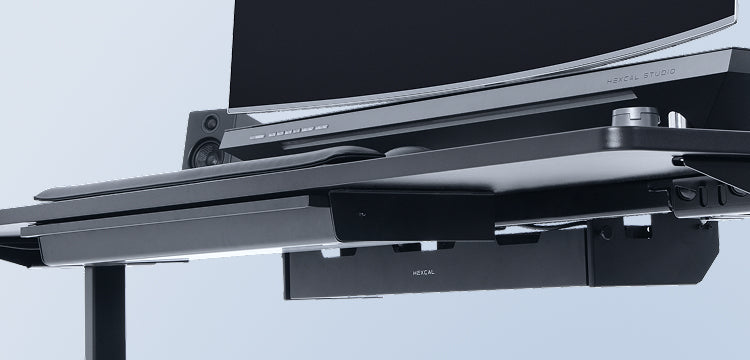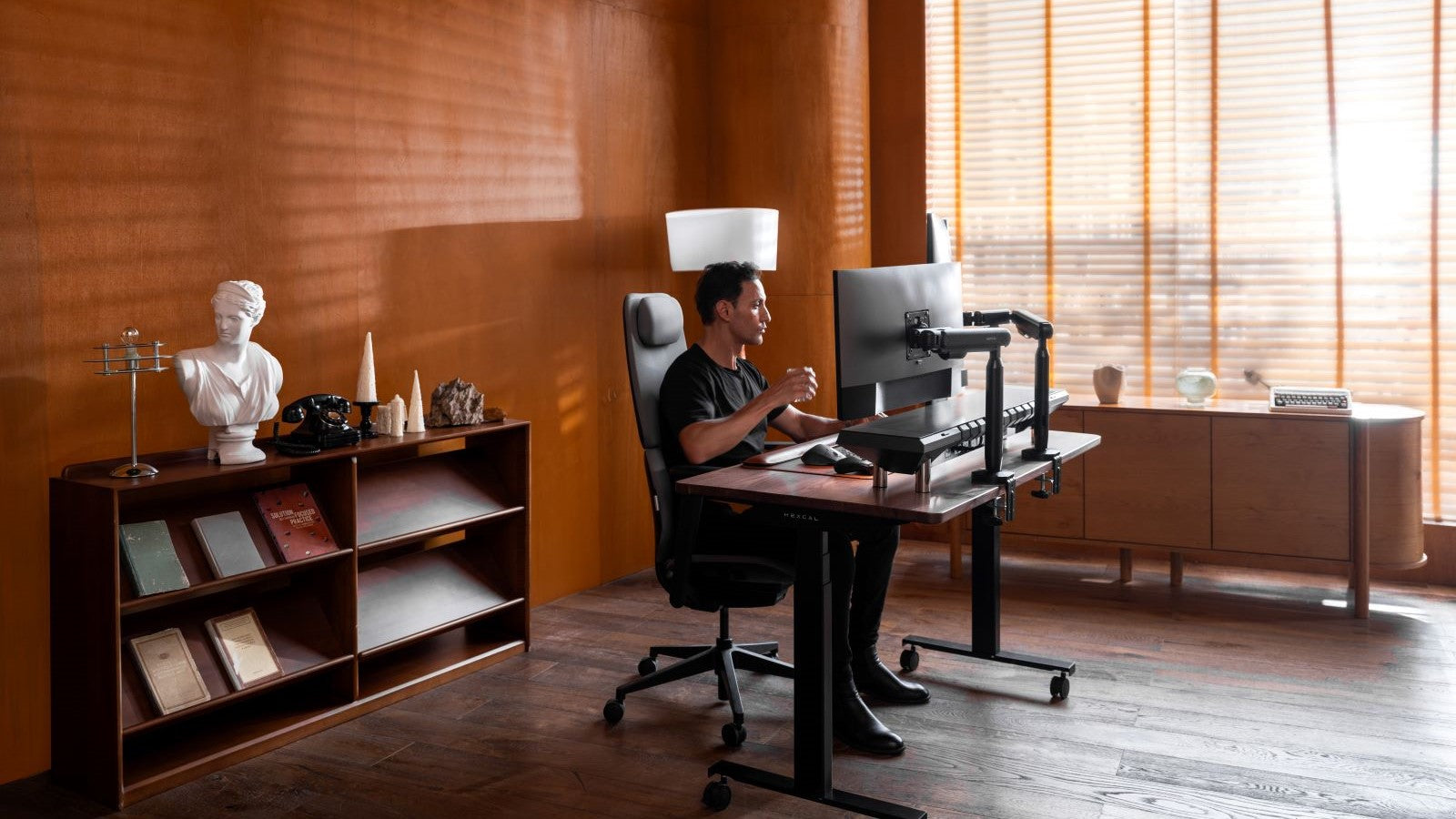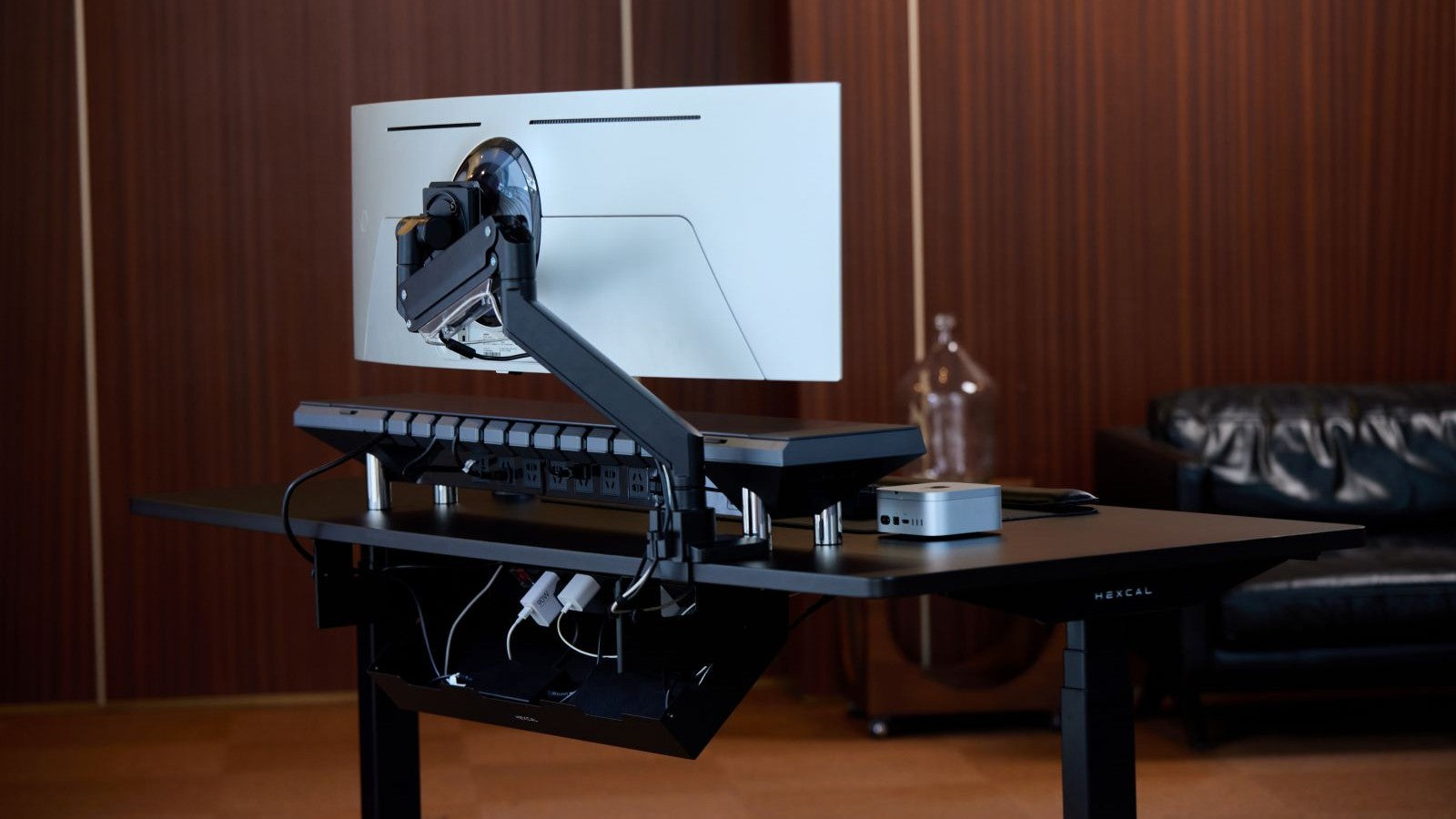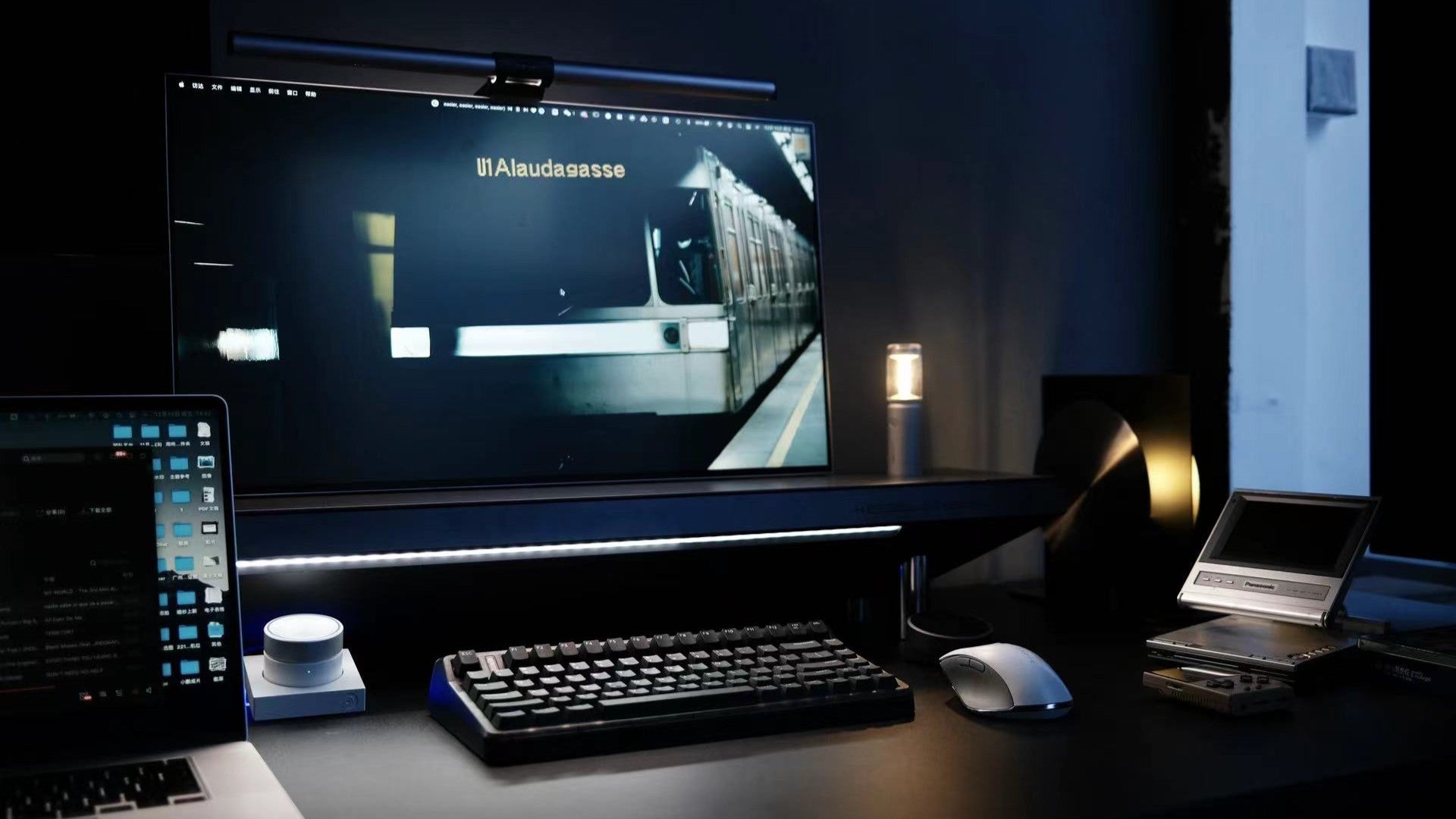When setting up a productive and ergonomic workspace, one often-overlooked detail is how your monitor is positioned. Whether you’re working from a corporate office, a home studio, or a hybrid space, the choice between a monitor stand and a monitor arm can significantly impact your comfort, posture, and efficiency throughout the day.In this guide, we’ll break down the differences between monitor stands and monitor arms, compare their advantages and disadvantages, and help you determine which solution best fits your desk, workflow, and ergonomic needs.
What Is a Monitor Stand?
A monitor stand is a static platform that elevates your monitor to a more comfortable viewing height. These are typically placed directly on your desk and can vary from simple risers to more elaborate platforms with built-in storage compartments.
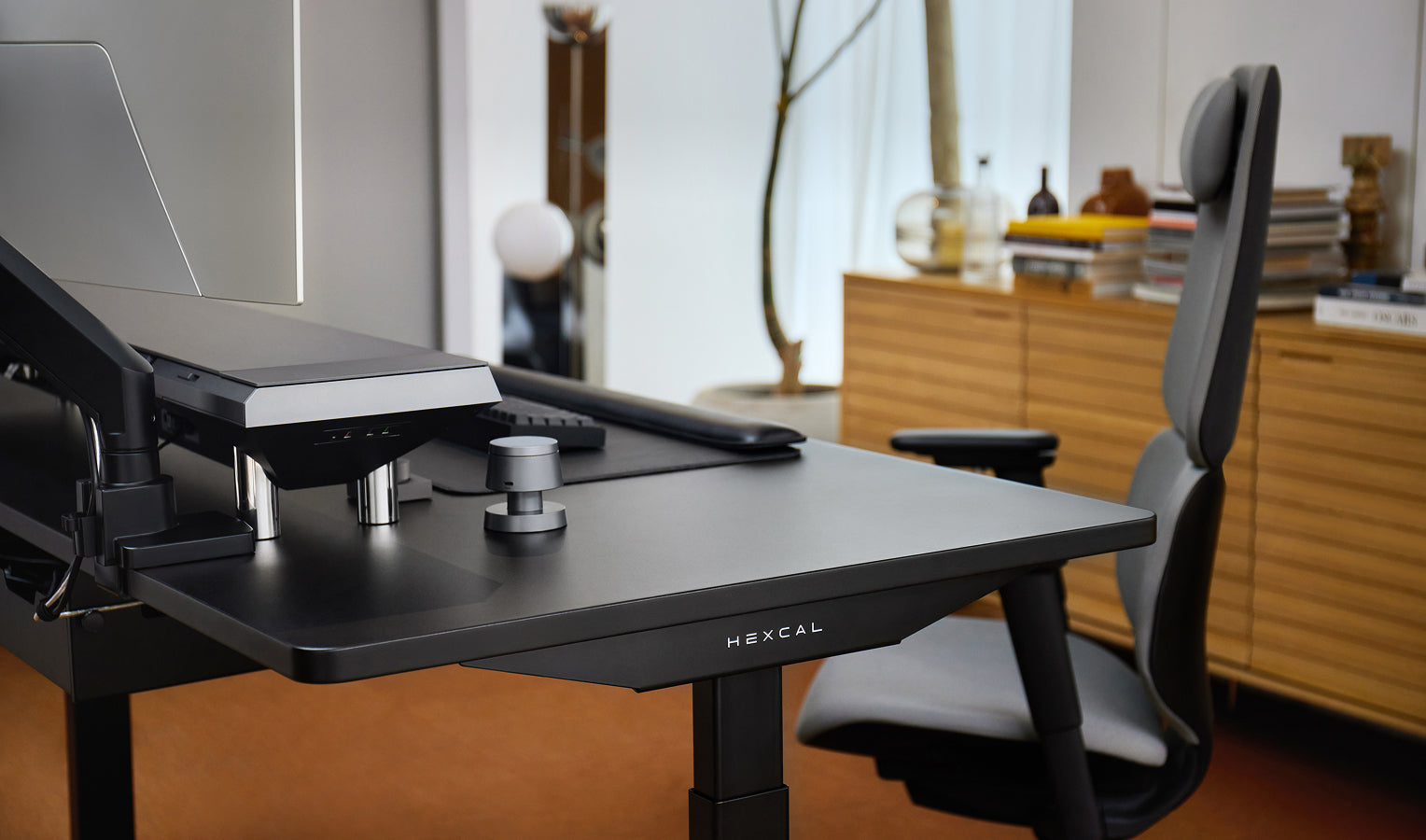
Advantages of Monitor Stands:
- Simple to use: No installation or mounting required—just place your monitor on top.
- Affordable: Generally more cost-effective than adjustable arms.
- Stable: Offers a solid, unmoving base that suits most screen sizes.
- Additional storage: Many stands provide space underneath for storing accessories, notebooks, or external devices.
Limitations of Monitor Stands:
- Limited adjustability: Most stands offer only a fixed height and viewing angle.
- Consumes desk space: The base of the stand takes up room on your work surface.
- Not ideal for multiple monitors: Aligning two or more screens evenly can be difficult.
- Less ergonomic precision: Minor adjustments in viewing height or distance are not possible without replacing the stand.
Ideal for: Smaller desks, minimal setups, and users who prefer a fixed and straightforward monitor solution.
What Is a Monitor Arm?
A monitor arm is an adjustable mounting system that attaches to your desk or wall, allowing you to position your screen at an ideal height, distance, and angle. Monitor arms often feature multi-joint or gas-spring mechanisms that enable smooth and precise movement.

Advantages of Monitor Arms:
- Full adjustability: Easily modify height, tilt, swivel, depth, and orientation.
- Improved ergonomics: Fine-tune your monitor’s position for optimal posture and reduced strain.
- Maximizes desk space: Frees up surface area by floating the monitor off the desk.
- Clean aesthetics: Cables are neatly routed, and the floating monitor creates a minimal, uncluttered look.
Limitations of Monitor Arms:
- Higher cost: Typically more expensive than basic monitor stands.
- Requires installation: Needs a clamp or grommet mount, and careful placement.
- Compatibility check required: Must match your monitor’s weight and VESA mount size.
Ideal for: Ergonomic workstations, standing desk users, creative professionals, and anyone managing multi-monitor setups or compact spaces.
Side-by-Side Comparison: Monitor Stand vs Monitor Arm
| Factor | Monitor Stand | Monitor Arm |
|
Adjustability |
Limited height adjustment, some modular options |
Extensive adjustments for height, tilt, swivel, rotation |
| Workspace Configuration | Takes up more desk space, may offer storage | Frees up desk space, allows easy repositioning |
| Ergonomic Support | Elevates monitor to eye level, less flexibility | Precise adjustments for better posture and comfort |
| Budget | More affordable, typically ranging from $20 to $900 | Higher cost, with prices from $40 to $200 depending on features and quality |
| Aesthetics | Simple, functional design; can also serve as a furniture piece | Sleek, minimalist look; contributes to a clean and organized workspace |
| Weight Capacity | Varies by size; small stands support up to 40-50 lbs, large stands up to 100 lbs or more | Varies by model; always check weight capacity to ensure stability |
| Additional Features | May include built-in USB ports, integrated lighting, and cable management | Often includes cable management, with some models offering USB charging ports or ambient lighting |
| Ideal Use Cases | Best for standard desk setups in traditional offices, home offices, or study areas | Ideal for dynamic or collaborative workspaces, minimalistic setups, and users with specific ergonomic needs |
| Advantages |
Simplicity and ease of use, |
Highly adjustable for optimal ergonomics, Frees up desk space, Facilitates easy collaboration, Ideal for dynamic work environments, Supports multiple monitor setups |
| Disadvantages | Limited adjustability, Takes up more desk surface area, May not suit all ergonomic needs, Less flexible for changing work positions |
May require more effort to install, Some models may have stability issues if not properly installed, Requires a sturdy desk for mounting |
Key Factors to Consider When Choosing
1. Desk Size
If you're working with a compact desk or need every inch of space available, a monitor arm is typically the smarter choice. It lifts your screen off the surface and opens up your desktop for additional tools or documents. A monitor stand may work well for larger desks or if you don’t mind a static configuration.
2. Ergonomic Goals
Ergonomic posture is essential if you're working long hours at your desk. A monitor arm allows you to set the screen precisely at eye level and distance—reducing strain on your neck and shoulders. Stands offer some height benefit but can’t match the flexibility of an arm when adjusting to your seated or standing posture.
3. Workflow & Movement
Do you shift positions during the day or use a sit-stand desk? If so, a monitor arm complements your movement by letting you reposition the screen fluidly. Monitor stands are better suited for fixed setups or users who remain seated most of the time.
Aesthetic and Practical Considerations
Today’s workspaces are as much about aesthetics as functionality. A floating monitor supported by a sleek arm creates a clean, modern look that aligns with the style of well-designed, tech-forward setups.
If visual minimalism is important to you—or you’re working in a creative or client-facing environment—monitor arms can elevate the appearance of your desk while keeping cables out of sight.
For a well-balanced, all-in-one setup that combines aesthetic appeal and functionality, the Hexcal Studio offers a beautifully integrated solution. It pairs seamlessly with Hexcal’s monitor arms for a streamlined experience designed to enhance both focus and comfort.
Hexcal Studio: A Premium Monitor Stand with Built-In Cable Management
If you’re leaning toward a monitor stand but want a more refined solution than traditional risers, the Hexcal Studio offers a unique, elevated experience.
The Hexcal Studio is a premium monitor stand designed not only to raise your screen to an ergonomic height but also to enhance your desk organization. With its integrated cable management system, internal power hub, and minimalist aluminum build, it transforms the standard monitor riser into a sophisticated desktop platform.
It’s ideal for professionals who want a clean, high-performance workspace with no visual distractions or cable clutter—perfectly blending form with function.

Hexcal Monitor Arm Solutions
At Hexcal, we’ve engineered our monitor arms to meet the needs of both everyday users and professional creators. Whether you're managing a lightweight screen or a heavy-duty display setup, our arms are built for strength, flexibility, and visual harmony.
Hexcal Single Monitor Arm
Designed for simplicity and stability, this monitor arm supports a wide range of screen sizes with smooth adjustability and clean cable management. Perfect for home offices or focused desk setups.
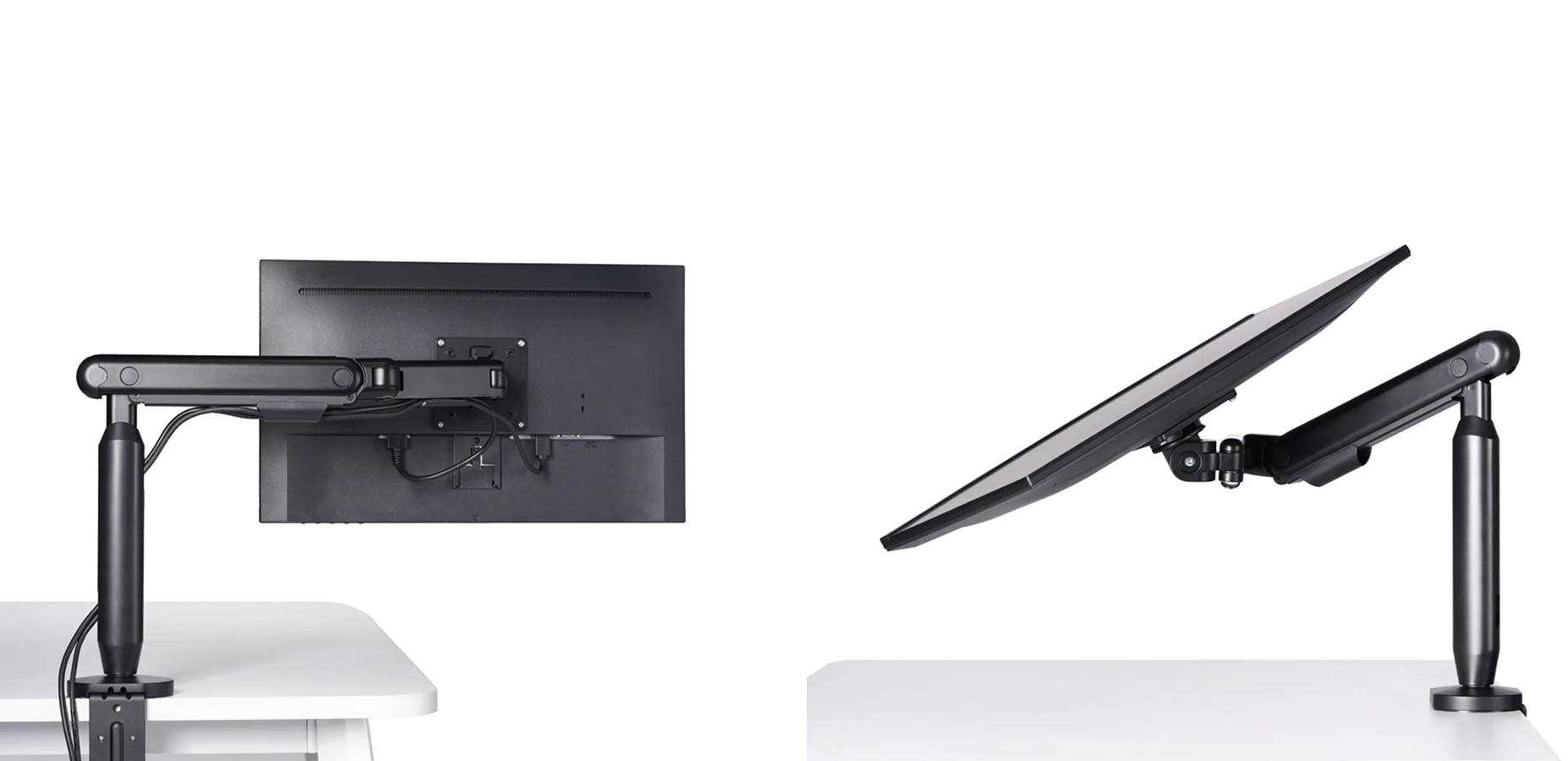
Hexcal Heavy Duty Monitor Arm
Built for larger or dual-monitor configurations, this model offers increased weight support and full-range articulation. It’s ideal for professionals in design, tech, or multitasking-heavy roles.Both models are designed to integrate perfectly with the Hexcal Studio, making it easy to create a unified workspace that prioritizes both form and function.
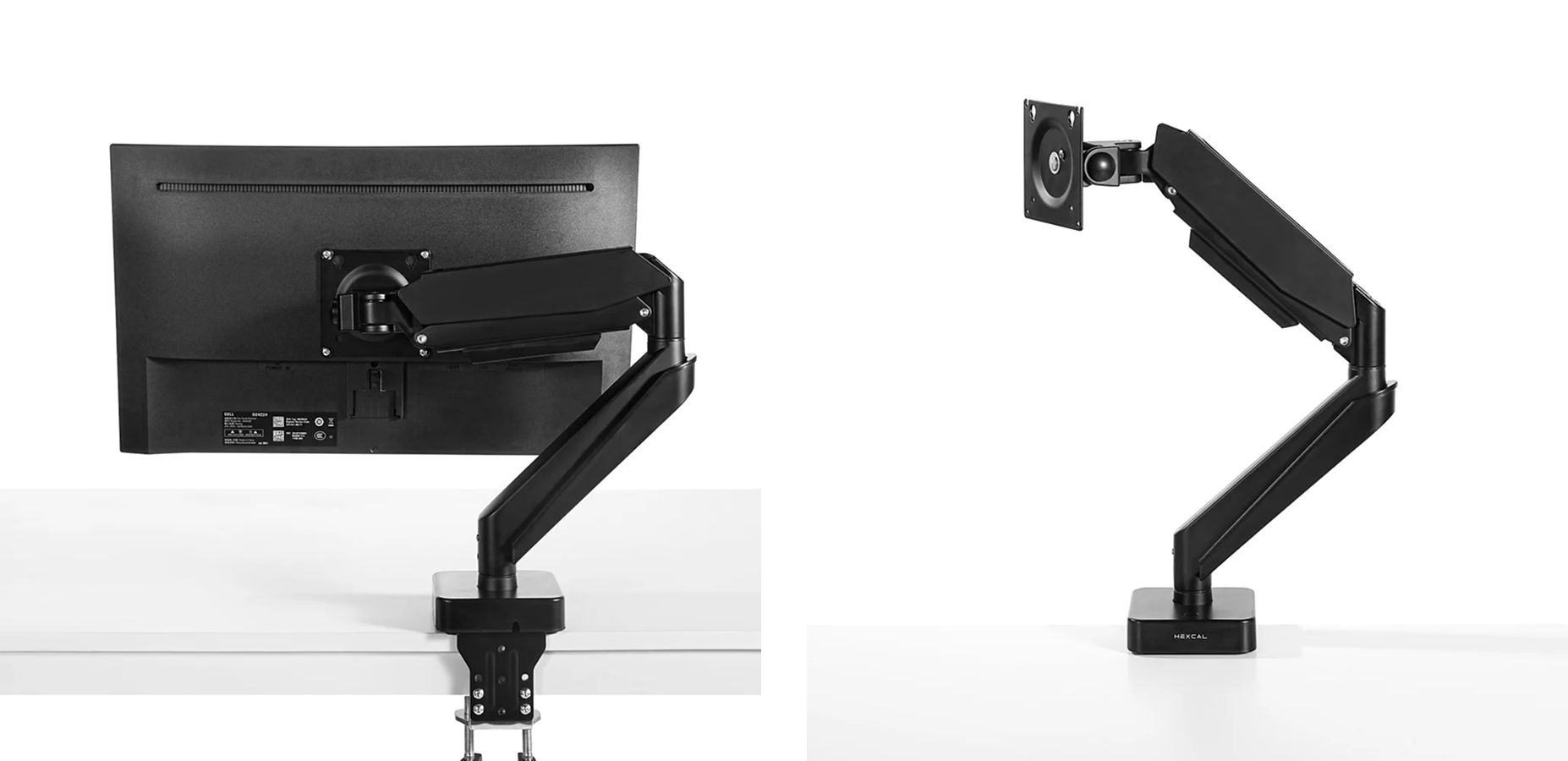
Do You Need to Choose? Not Necessarily.
While monitor stands and arms are often discussed as alternatives, many users benefit from combining both. At Hexcal, we design our products to work together seamlessly—so your setup can adapt to your workflow, not the other way around.
For example, the Hexcal Studio can serve as the core surface-level platform while a Hexcal Single Monitor Arm or Hexcal Heavy Duty Monitor Arm handles screen positioning and movement. This hybrid setup gives you the best of both worlds: a sturdy, elevated workspace with accessible power and cable control, combined with ergonomic screen flexibility.
Whether you're building a productivity-first command center or a clean creative station, this dual approach delivers a setup that’s both practical and polished.
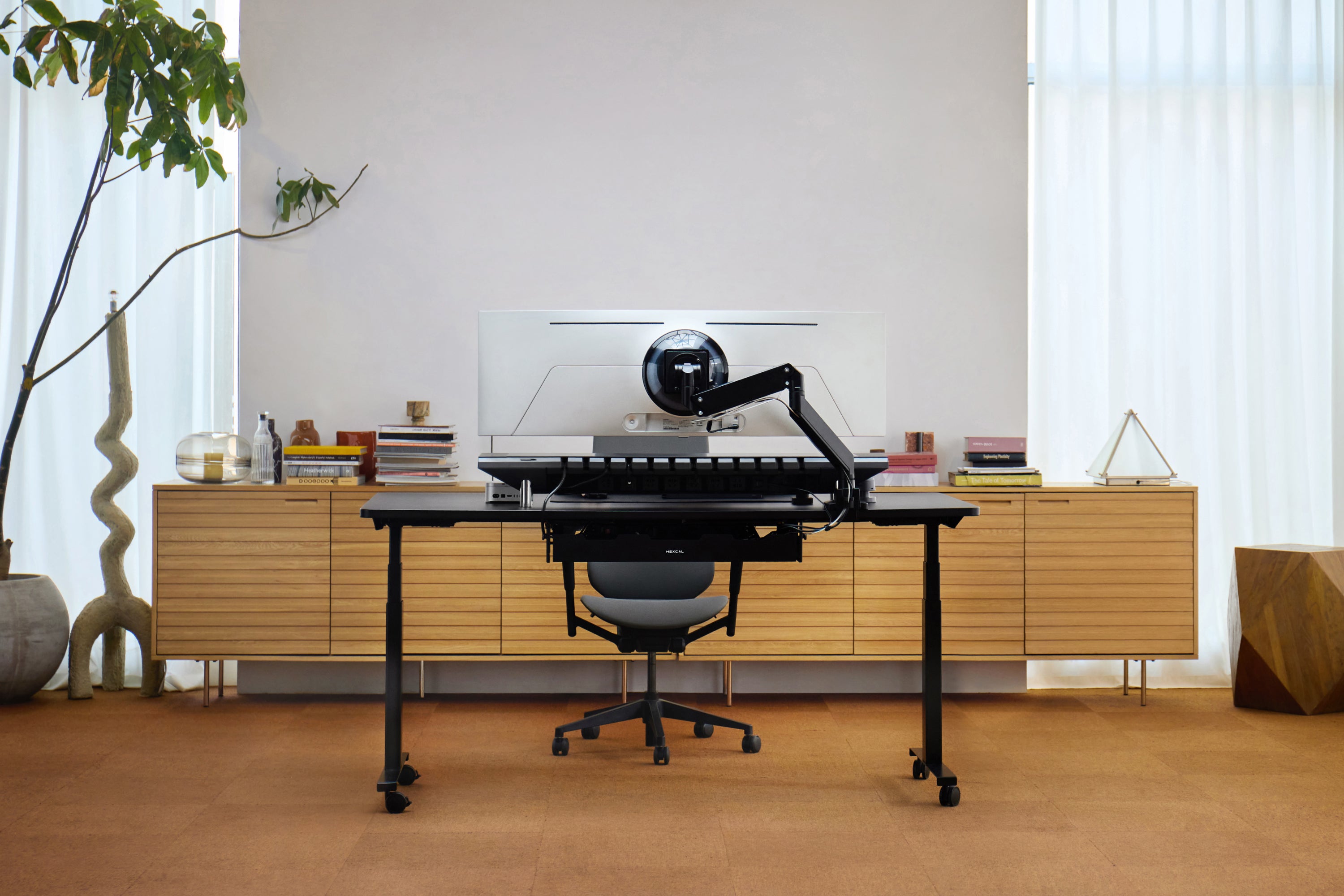
Final Thoughts
Choosing between a monitor stand and a monitor arm ultimately depends on how you use your workspace. If you're looking for an affordable, stationary option with minimal setup, a monitor stand may be all you need. But if you’re ready to invest in a more ergonomic, flexible, and space-efficient setup, a monitor arm is the clear winner. As work evolves to blend home, office, and hybrid environments, small upgrades like monitor positioning can make a meaningful difference in comfort and productivity.
Still deciding? Our earlier guide, “Should I Choose a Monitor Stand or Monitor Arm?”, offers a beginner-friendly take on this comparison—perfect for first-time workspace upgrades.


